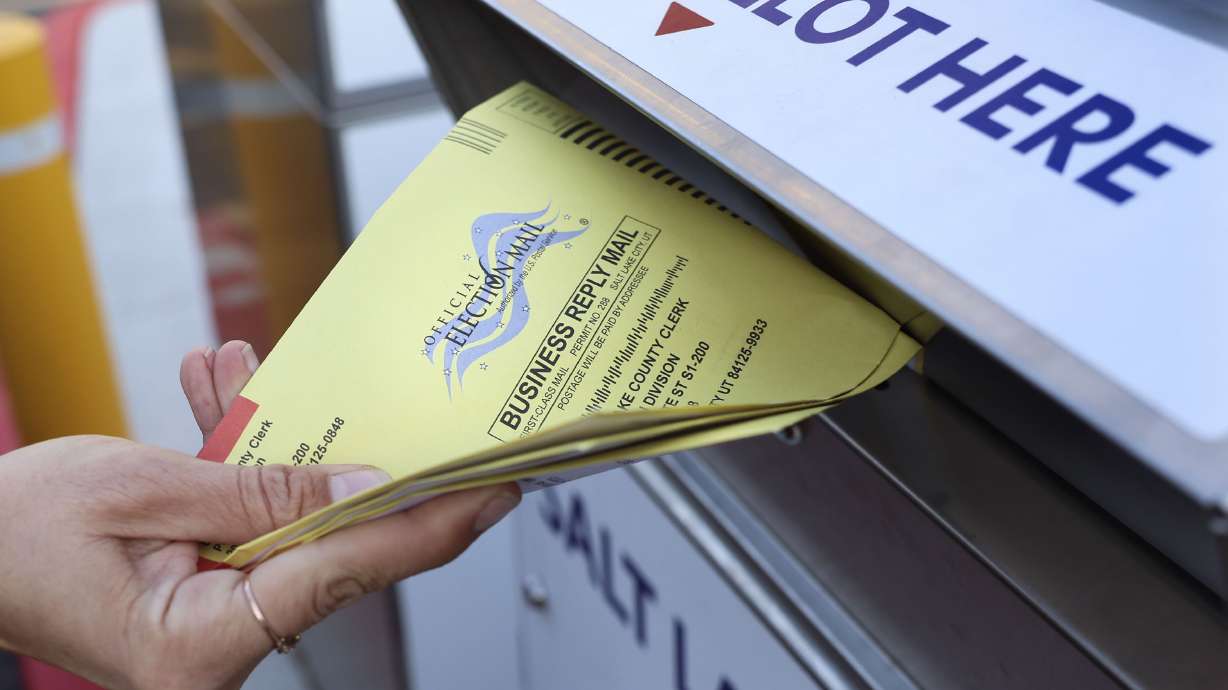Estimated read time: 3-4 minutes
This archived news story is available only for your personal, non-commercial use. Information in the story may be outdated or superseded by additional information. Reading or replaying the story in its archived form does not constitute a republication of the story.
OREM — Ranked choice voting has gained ground nationally over the last few years and Utah is certainly no exception to the growing popularity,
During the 2021 election cycle, 21 Utah cities and towns rolled out ranked choice voting, which allows voters to rank candidates and ballot measures in order of preference, instead of the traditional single-choice method, in which voters choose only one candidate or measure.
Despite the rising popularity of ranked choice voting — a survey of Utahns after the 2021 election cycle indicated that voters who participated in a ranked choice election approved of the process and want to see the system expanded — there is still apprehension around the method.
This is largely due to how the results are presented to the general public and what information is (and isn't) included, says a new report from the Gary R. Herbert Institute for Public Policy at Utah Valley University.
The report, by Alan Parry, chairman of UVU's mathematics department, says that transparency by governing officials is essential to ease some of the apprehension that inevitably comes with new ideas.
Essentially, citizens should be able to "check the work" of election procedures by recreating the computation used in the election method.
"The method of calculating the winner (in a ranked choice election) ends up being a little bit more involved and the results can look a little bit more intimidating," Parry said.
To illustrate his point, Parry presented the results of Sandy's 2021 mayoral race, which used ranked choice voting via the instant runoff voting method. Eight candidates ran in the election and it took seven rounds to complete the instant runoff voting process on the 21,165 total ranked choice ballots.

"One of the problems that this has is you can't actually reproduce the calculation they made, and that's a problem," Parry said. "What the problem is, is that those (ranked choice) votes will get redistributed to who else they voted for once that person (the voter's top-ranked choice) is eliminated. But you can't reconstruct who else they voted for ... which makes it very difficult for me to be confident that the thing was calculated correctly, because I can't go in and redo it."
Parry doesn't think it should take a mathematician to vet election results for themselves, but the issue basically boils down to what data is made available by governing officials.
"The anonymized raw voter data ... should be made available in some kind of easily accessible format like a spreadsheet ... not a proprietary database file. Something that could be used, that somebody could just go in and mess around with and see how to recreate the calculation of the election," Parry said. "The results should be provided in a way that allows for people to both look at sort of the big picture, but also little picture stuff."
That would look like releasing results in either a staggered or animated manner that shows round-by-round results so people can see how a candidate or measure is calculated to get to the next round.
Parry and the Herbert Institute are hopeful that election officials will heed the calls for improved and increased measures when it comes to making election information data both accessible and digestible.
"We encourage all election organizations to adopt the principles of best practice described in this paper, as they will likely lead to improved understanding and acceptance of (ranked choice voting) results," said the report.
The report can be accessed in its entirety here.









